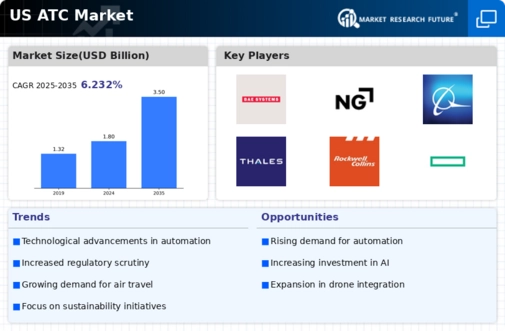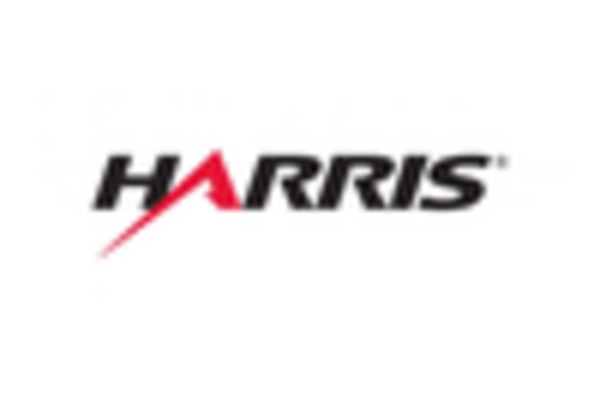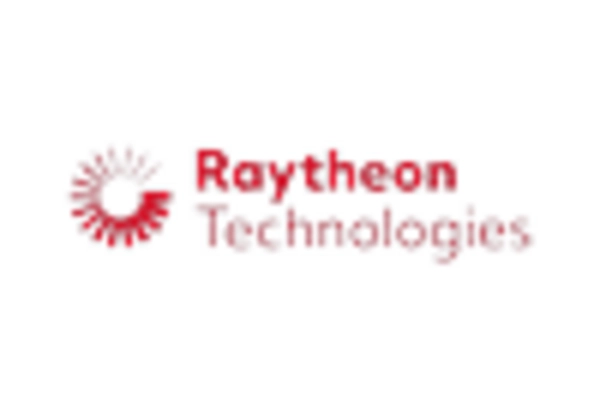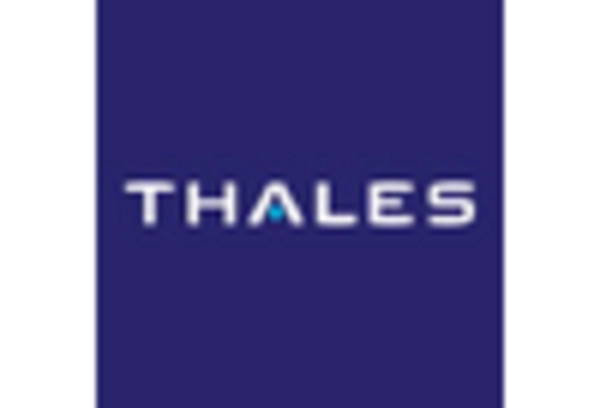Increased Air Traffic Demand
The atc market is experiencing a notable surge in demand due to the increasing volume of air traffic in the US. Projections indicate that air traffic is expected to grow by approximately 3.5% annually over the next decade, necessitating enhanced air traffic management systems. This growth is driven by factors such as rising disposable incomes, expanding tourism, and the growth of e-commerce, which collectively contribute to a higher frequency of flights. Consequently, the atc market must adapt to accommodate this influx, leading to investments in advanced technologies and infrastructure. The need for efficient air traffic management solutions is paramount to ensure safety and minimize delays, thereby propelling market expansion.
Emerging Technologies and Innovations
Emerging technologies and innovations are reshaping the landscape of the atc market in the US. The integration of artificial intelligence, machine learning, and data analytics into air traffic management systems is revolutionizing operational efficiency. These technologies enable real-time data processing and predictive analytics, which can significantly enhance decision-making processes. In 2025, it is estimated that investments in AI-driven solutions within the atc market will exceed $500 million, reflecting a growing trend towards automation and smart technologies. As stakeholders increasingly recognize the potential of these innovations, the market is likely to witness accelerated growth, driven by the demand for more efficient and reliable air traffic control solutions.
Regulatory Compliance and Safety Standards
The atc market in the US is heavily influenced by stringent regulatory compliance and safety standards. Regulatory bodies such as the Federal Aviation Administration (FAA) impose rigorous guidelines that ensure the safety and efficiency of air traffic control systems. Compliance with these regulations often necessitates significant investment in advanced technologies and training, which can drive market growth. In 2025, the FAA's budget allocation for modernization efforts is projected to reach $1.5 billion, reflecting the commitment to enhancing safety and operational efficiency. This focus on compliance not only fosters innovation within the atc market but also encourages stakeholders to adopt cutting-edge solutions that align with safety protocols.
Public-Private Partnerships and Collaboration
Public-private partnerships and collaboration are emerging as vital drivers within the atc market in the US. These partnerships facilitate the sharing of resources, expertise, and technology between government agencies and private sector companies. Such collaborations are essential for addressing the complex challenges associated with air traffic management, particularly in the context of modernization efforts. In 2025, several key initiatives are underway, involving joint investments in research and development aimed at enhancing air traffic control systems. This collaborative approach not only fosters innovation but also ensures that the atc market can effectively respond to evolving demands and challenges, ultimately leading to improved safety and efficiency in air traffic operations.
Investment in Modernization and Infrastructure
Investment in modernization and infrastructure is a critical driver for the atc market in the US. The ongoing need to upgrade aging air traffic control systems has prompted both public and private sector investments. The FAA has earmarked approximately $1.2 billion for infrastructure improvements in 2025, aimed at enhancing the efficiency and reliability of air traffic management. This influx of capital is likely to stimulate innovation within the atc market, as companies develop and implement state-of-the-art technologies. Furthermore, the integration of automation and artificial intelligence into air traffic control systems is anticipated to streamline operations, reduce human error, and improve overall safety, thereby fostering a more robust market environment.

















Leave a Comment